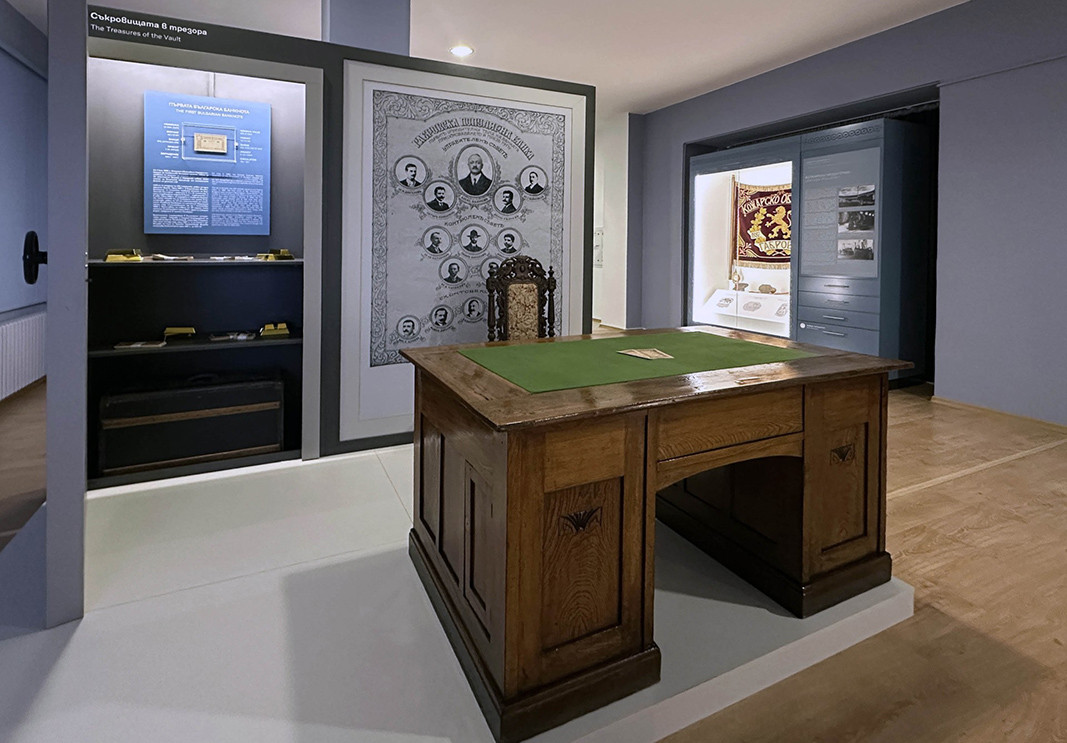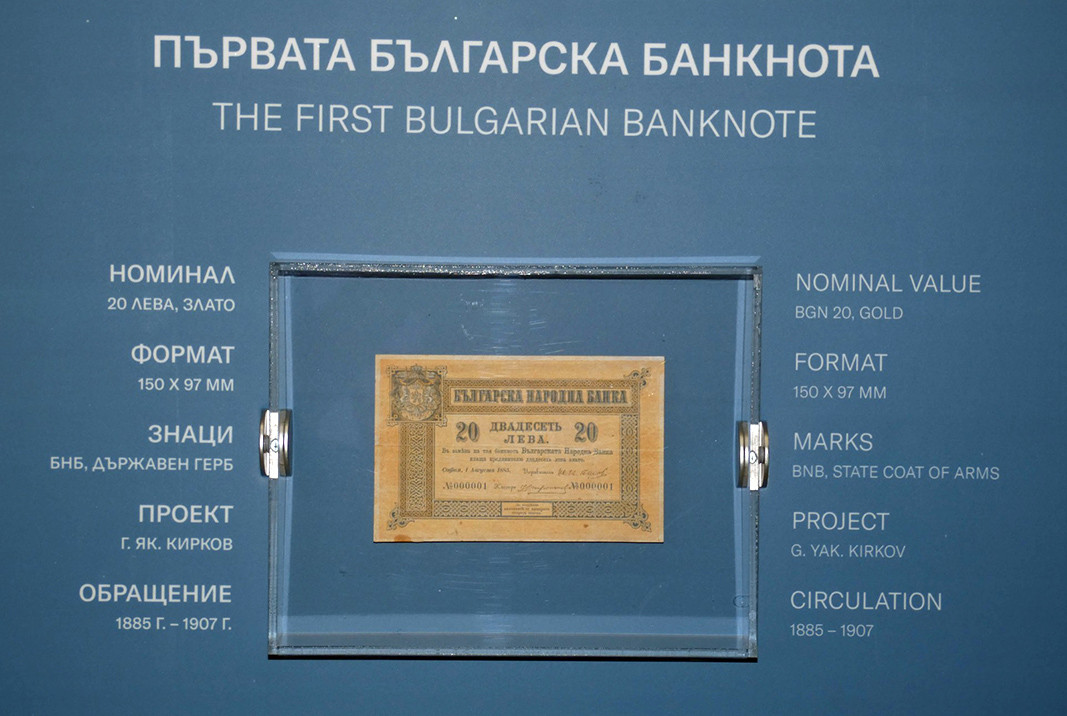The Regional History Museum in Gabrovo displays a modest, rectangular piece of paper measuring 10 by 15 cm: the first Bulgarian banknote — a twenty-leva bill with the serial number 000001. It was printed on August 1, 1885, in St. Petersburg, and this year, 2025, marks the 140th anniversary of its issuance.
The banknote appeared on the eve of Unification, at a time when Bulgaria was taking its first steps towards a modern economic system by introducing the gold standard and centralised monetary policy. Today, note No. 000001 is part of the collection at the Regional History Museum in Gabrovo, after spending years in the possession of a Gabrovo merchant and his heirs, explains museum curator Ivan Postompirov.
This was made possible in January 1885, when the Bulgarian National Bank was transformed into a state credit institution with the authority to issue banknotes. At the time, the bank sought to introduce the gold standard, which was widely used across Europe—meaning that banknotes were backed by gold and could be exchanged for the country's gold reserves.
As is well documented, the first Bulgarian coins were minted and released into circulation in 1881, following the adoption of the Law on the Right to Mint Coins in the Principality of Bulgaria in 1880. This law formally established the lev as the national currency, was defined to be equal in value to the French franc, in line with the standards of the Latin Monetary Union. The initial series included copper and silver coins, with gold coins being introduced shortly afterwards.

Before the lev was introduced, monetary transactions in Bulgaria relied on a mix of foreign currencies, including Russian roubles brought in during the Russo-Turkish War of 1877–78, as well as Ottoman and various European coins. The lack of a unified monetary system created serious challenges for economic activity, particularly with regard to trade, accounting and price stability.
The design of the first two Bulgarian banknotes, in denominations of 20 and 50 leva, was created by Georgi Kirkov from Pleven—the only Bulgarian at the time with formal training in modern graphic design. The 20-lev note featured a notable warning: 'For counterfeiting, the guilty shall be punished according to the law' — an early example of anti-counterfeiting measures back in 1885.

Although the note declared a gold guarantee, this was, in practice, limited to the value of a single French Napoleon coin, worth 20 gold francs — the currency in which Bulgaria obtained its early foreign loans and drafted its initial state budgets.
'On the face of the banknote is its denomination, 20 leva. In the top left corner is the coat of arms of the Principality of Bulgaria, as it was a principality at the time," explains Ivan Postompirov. 'At the top,' he continues, 'we read "Bulgarian National Bank", the issuer of the banknote. The note also states that the Bulgarian National Bank will pay the bearer 20 leva in gold in exchange for it. This means that it was equivalent to 20 leva, but since there were no Bulgarian gold coins until 1894, it was equal to one 20-franc Napoleon coin. The Bulgarian lev was not exactly pegged to the franc, but it equalled the gold franc at that time. The date of printing, 'Sofia, 1 August 1885', is also indicated, along with the governor's signature and a number.
The first banknotes were so large that they did not fit in a regular wallet. This is why they were folded in four. Traces of these folds are still visible on many preserved banknotes today."

Paradoxically, despite the gold standard, Bulgarians viewed paper money with suspicion. At that time, Ottoman paper money, known as kaymet, was in circulation in the region, but people still felt more secure with coins jingling in their pockets. The 20-leva denomination was too high for everyday use — equivalent to a month's salary for a civil servant — so banknotes mainly circulated in transactions between banks and merchants.
The fate of the first Bulgarian banknote is interesting:
'This banknote survived by a stroke of luck, as the series was confiscated and destroyed after 1907. It belonged to Vasil Tyulyumbakov, a merchant and municipal councillor from Gabrovo. We don't know how it came into his possession, but it has been well preserved, with only the top right corner torn off. It was subsequently inherited by his son Hristo, who was an engineer and a teacher. Hristo sold it to our Historical Museum in 1961 for what I believe was 250 leva, which was a considerable amount at the time," concludes Ivan Postompirov.

In 1018, after half a century of struggle, the First Bulgarian Empire was conquered by Byzantium. Despite the many uprisings of the Bulgarians, the power of Constantinople lasted for nearly two centuries. In the autumn of 1185 or the..
On 19 October, Bulgarians commemorate St Ivan Rilski, also known as St John of Rila, who is considered the country’s heavenly protector. He founded the Rila Monastery, which is the largest and most influential spiritual centre in Bulgaria. Ivan..
Father Genadiy Martinov is a Bessarabian Bulgarian, born in the village of Devetliy, Odessa province (Ukraine). Two centuries ago, his family lived in Eastern Thrace, near Edirne, but after the end of the Russo-Turkish War (1828–1829), during a period..

+359 2 9336 661
